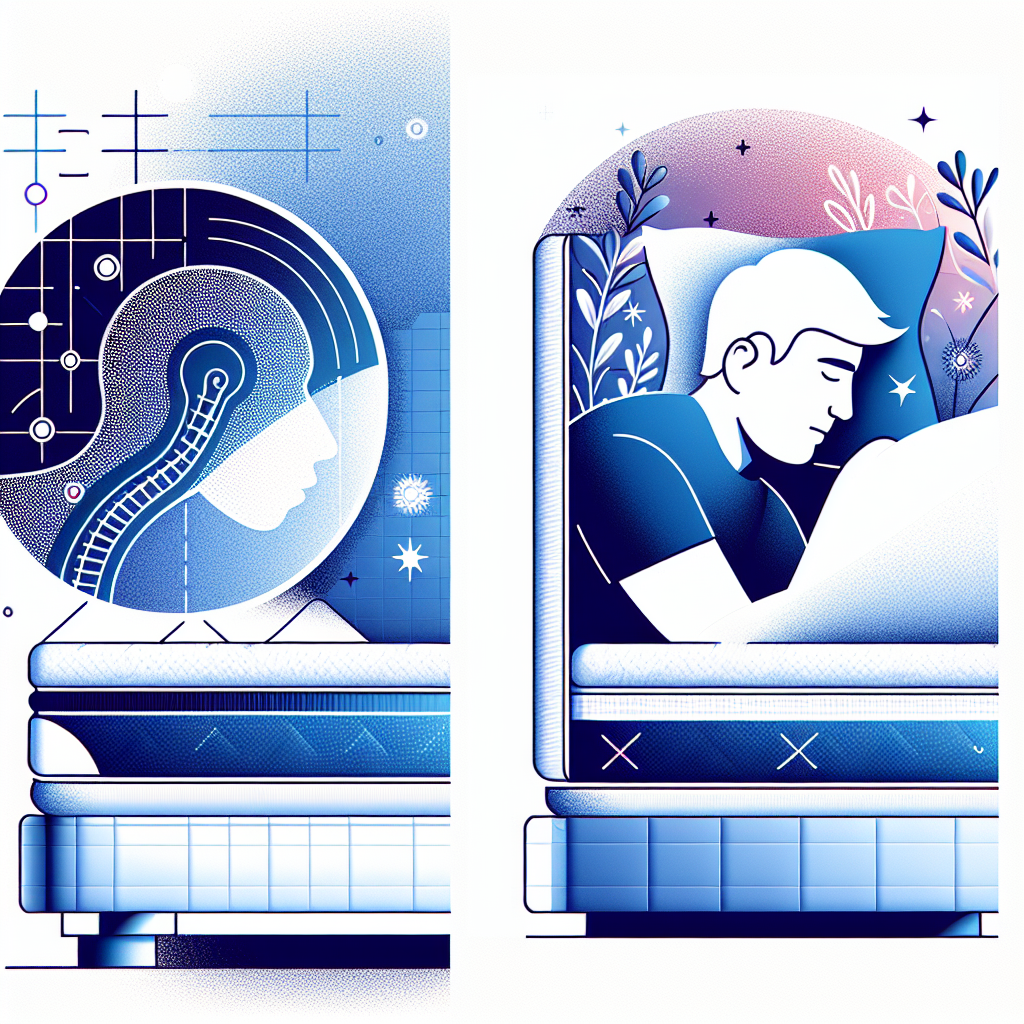
If you find yourself waking up with a twinge in your lower back after a night of side sleeping, you’re not alone. Many people experience lower back pain while sleeping on their sides, but the good news is that there are simple ways to prevent this discomfort. By making a few adjustments to your sleep position, investing in a supportive mattress and pillow, and incorporating some gentle stretching exercises into your daily routine, you can bid farewell to those morning aches and enjoy a restful night’s sleep.

Causes of lower back pain while side sleeping
Improper spinal alignment
Improper spinal alignment is one of the leading causes of lower back pain while side sleeping. When your spine is not properly aligned, it puts unnecessary strain on the muscles and ligaments surrounding it. This can lead to discomfort and pain in the lower back area. It is important to ensure that your spine is in a neutral position while sleeping on your side to prevent this type of pain.
Inadequate support for the hips and waist
Another common cause of lower back pain while side sleeping is inadequate support for the hips and waist. When you lie on your side, it is crucial to have proper support in these areas to maintain a neutral spine alignment. Lack of support can result in the hips and waist sinking into the mattress, creating an unnatural curve in the spine and causing lower back pain.
Poor mattress quality
The quality of your mattress can greatly impact your sleeping posture and, consequently, your lower back health. A mattress that is too firm or too soft may not provide adequate support to keep your spine aligned while side sleeping. It is important to invest in a high-quality mattress that offers the right amount of support and contouring for your body, especially if you frequently experience lower back pain.
Injury or strain
In some cases, lower back pain while side sleeping may be a result of injury or strain. If you have recently experienced a fall or engaged in physical activities that put stress on your back muscles, it is possible that side sleeping exacerbates the pain. It is advisable to give your body time to heal and recover from any injury or strain before resuming side sleeping.
Pre-existing back conditions
Individuals with pre-existing back conditions, such as herniated discs or spinal stenosis, are more likely to experience lower back pain while side sleeping. These conditions can make the spine more vulnerable to misalignment and pressure while in the side sleeping position. It is essential for those with pre-existing back conditions to take extra precautions and seek professional guidance on the best sleeping positions and support options to minimize pain.
Effects of lower back pain
Disrupts sleep
Lower back pain can significantly disrupt sleep, making it difficult to fall asleep or stay asleep throughout the night. The discomfort and pain can cause tossing and turning, leading to frequent awakenings. This can result in inadequate rest and fatigue during the day, impacting overall well-being.
Affects daily activities
Lower back pain can also affect daily activities, making simple tasks such as bending, lifting, and sitting for prolonged periods challenging and uncomfortable. It can limit mobility and hinder productivity, affecting both work and personal life.
Causes discomfort and pain
The most obvious effect of lower back pain is the discomfort and pain it causes. The pain can range from mild to severe, making it difficult to find relief or engage in activities that require bending or twisting. The continuous discomfort can have a negative impact on mood and overall quality of life.

Preventive measures for lower back pain while side sleeping
Maintain proper spinal alignment
To prevent lower back pain while side sleeping, it is crucial to maintain proper spinal alignment. Use a supportive pillow for your head to keep your neck aligned with your spine. Additionally, place a pillow between your knees to help align your hips and prevent them from sinking into the mattress. For further support, consider using a body pillow to align your entire spine while side sleeping.
Choose a suitable mattress
Selecting a suitable mattress is essential in preventing lower back pain while side sleeping. Consider factors such as firmness and support when choosing a mattress. A medium-firm mattress is generally recommended as it provides a balance of support and comfort. Look for a mattress that has contouring abilities to help distribute your body weight evenly and maintain proper spinal alignment.
Use additional support pillows
In addition to a supportive pillow for your head, consider using additional support pillows to prevent lower back pain while side sleeping. Place a pillow under your waist to provide support and help maintain a neutral spine alignment. Utilize a knee pillow to further support your hips and knees. If needed, you can also try rolling up a towel and placing it strategically to provide added support where necessary.
Adopt correct sleeping position
Adopting the correct sleeping position can greatly reduce the risk of lower back pain while side sleeping. Align your neck and spine by ensuring your pillow adequately supports your head. Avoid curling up in a fetal position, as this can put excessive strain on the lower back. Instead, try to maintain a neutral position, with your body elongated and supported.
Strengthen core muscles
Engaging in exercises to strengthen your core muscles can help prevent lower back pain while side sleeping. Strong core muscles provide better support to your spine, reducing the risk of misalignment and pain. Incorporate exercises that target both the back and abdomen, such as planks, bridges, and leg raises. Consulting with a physical therapist can provide guidance on the best exercises tailored to your specific needs.
Engage in regular exercise
Regular exercise is crucial in maintaining overall spinal health and preventing lower back pain. It helps improve flexibility, strengthen muscles, and promote good posture. Include low-impact exercises, such as swimming or cycling, to minimize strain on the lower back. Incorporating stretching and flexibility exercises can help alleviate tension in the muscles surrounding the spine. Additionally, aerobic exercises, such as brisk walking or jogging, can improve cardiovascular health, which indirectly benefits the spine.
Avoid sudden movements
Avoiding sudden movements while sleeping can prevent unnecessary strain on the lower back. Try to move slowly and deliberately when changing positions during sleep. Sudden jerking or twisting movements can strain the muscles and ligaments, leading to lower back pain.
Manage stress levels
Stress can contribute to muscle tension and increased pain sensitivity, making lower back pain more pronounced. Managing stress levels through practices such as meditation, deep breathing exercises, and relaxation techniques can help alleviate tension in the lower back muscles. Incorporate stress-management strategies into your daily routine to reduce the risk of experiencing lower back pain while side sleeping.
Ice or heat therapy
Applying ice or heat to the lower back area can provide temporary relief from pain and reduce inflammation. Ice therapy is effective in the acute phase of injury or when there is significant inflammation, as it helps numb the area and decrease swelling. Heat therapy, on the other hand, can help relax the muscles and improve blood flow, promoting healing. Experiment with both ice and heat therapy to determine which method provides the most relief for your lower back pain.
Seek professional help
If lower back pain persists or worsens despite preventive measures, it is important to seek professional help. Consult a healthcare professional, such as a primary care physician or orthopedic specialist, to ensure an accurate diagnosis and appropriate treatment plan. They may recommend further medical evaluations, such as X-rays or MRI scans, to identify any underlying causes. Depending on the severity and nature of the pain, they may also recommend physical therapy or chiropractic care to address specific issues and provide targeted relief.
Maintain proper spinal alignment
Use a supportive pillow for the head
A supportive pillow for your head is essential in maintaining proper spinal alignment while side sleeping. Look for a pillow that offers adequate support and contouring for your neck and head. It should keep your spine aligned with your neck, preventing any strain or discomfort.
Place a pillow between the knees
To further support proper spinal alignment, place a pillow between your knees while side sleeping. This helps prevent your hips from rotating and creating an unnatural curve in your spine. The pillow acts as a cushion, keeping your knees aligned with your hips and maintaining a neutral position for your spine.
Align the spine with a body pillow
For additional support and alignment, consider using a body pillow while side sleeping. A body pillow can be placed alongside your body, aligning your entire spine from your neck to your lower back. It helps distribute your body weight evenly and prevents any excessive pressure on specific areas, reducing the risk of lower back pain.

Choose a suitable mattress
Consider firmness and support
When selecting a mattress to prevent lower back pain while side sleeping, consider both firmness and support. A mattress that is too firm may not provide adequate contouring and can create pressure points, while a mattress that is too soft may lack the necessary support for proper alignment. Finding a balance between firmness and support is key to ensuring a comfortable and pain-free sleep experience.
Opt for a medium-firm mattress
A medium-firm mattress is generally recommended for individuals experiencing lower back pain while side sleeping. It offers a combination of support and comfort, maintaining proper spinal alignment while providing a cushioning effect. This type of mattress allows your body to sink slightly, reducing pressure points and minimizing strain on the lower back.
Select a mattress with contouring abilities
Look for a mattress with contouring abilities to ensure optimal support while side sleeping. This feature allows the mattress to conform to your body shape, providing targeted support to different areas, including the hips, waist, and lower back. Contouring helps maintain proper spinal alignment and relieves pressure points, reducing the risk of lower back pain.
Use additional support pillows
Place a pillow under the waist
To provide additional support to the waist area, place a pillow under your waist while side sleeping. This helps prevent the hips from sinking into the mattress and maintains a neutral spine alignment. The pillow acts as a buffer, keeping the waist supported and reducing strain on the lower back.
Utilize a knee pillow
A knee pillow is a useful tool to support proper spinal alignment while side sleeping. Place the pillow between your knees to align your hips and prevent any twisting or stress on the lower back. The knee pillow helps keep your spine elongated and reduces the risk of lower back pain.
Try a rolled-up towel for added support
If you don’t have a specific support pillow, a rolled-up towel can serve as a makeshift option. Roll up a towel tightly and place it strategically to provide additional support where needed. This can help maintain proper spinal alignment and alleviate any discomfort or pain in the lower back while side sleeping.
Adopt correct sleeping position
Align the neck and spine
Maintaining proper alignment of the neck and spine is crucial while side sleeping. Use a supportive pillow that keeps your neck and head in a neutral position, aligned with the rest of your spine. This helps prevent strain on the neck and lower back, reducing the risk of pain and discomfort.
Avoid fetal position
Although it may be tempting, avoid curling up in a fetal position while side sleeping, as it can increase the risk of lower back pain. This position can cause the spine to curve unnaturally, putting strain on the lower back. Instead, focus on keeping your body elongated and supported to maintain proper alignment.
Try a neutral position
A neutral position is ideal for preventing lower back pain while side sleeping. Keep your body elongated, with your neck, spine, and hips aligned. This position helps distribute your body weight evenly, reduces strain on the lower back, and maintains optimal spinal alignment. Experiment with different pillow and support configurations to find the most comfortable and supportive neutral position for your body.
Strengthen core muscles
Incorporate exercises for the back and abdomen
Engaging in exercises that target the back and abdominal muscles is beneficial in preventing lower back pain while side sleeping. Strong core muscles provide stability and support to the spine, reducing the likelihood of misalignment and pain. Incorporate exercises such as planks, bird dogs, and supermans into your fitness routine to strengthen these muscle groups.
Consult a physical therapist for guidance
If you are unsure about which exercises to perform or how to properly strengthen your core muscles, consider consulting a physical therapist. They can provide personalized guidance and create a tailored exercise plan based on your specific needs and capabilities. A physical therapist can also assess your posture and alignment to address any potential issues that may contribute to lower back pain while side sleeping.
Engage in regular exercise
Increase overall fitness
Engaging in regular exercise is essential for maintaining overall spinal health and preventing lower back pain. Increasing your overall fitness level can help improve posture, enhance flexibility, and strengthen muscles, reducing the risk of muscle imbalances and strain on the lower back. Aim for at least 30 minutes of moderate-intensity exercise most days of the week to reap the benefits.
Include low-impact exercises
When selecting exercises to incorporate into your routine, opt for low-impact options that are gentle on the joints and lower back. Activities such as swimming, cycling, or using an elliptical machine are excellent choices as they provide cardiovascular benefits without placing excessive stress on the spine. These exercises help increase overall strength and endurance, indirectly contributing to better spinal health.
Stretching and flexibility exercises
In addition to strengthening exercises, it is important to include stretching and flexibility exercises in your routine. Stretching helps improve muscle flexibility, reduces muscle tension, and enhances range of motion. Focus on stretches that target the lower back area, such as the cat-camel stretch, seated forward bend, and spinal twists. Perform these stretches after a workout or as part of a dynamic warm-up routine.
Aerobic exercises for cardiovascular health
Maintaining cardiovascular health is crucial for overall well-being and spinal health. Engaging in aerobic exercises, such as brisk walking, jogging, or dancing, helps improve blood circulation, strengthens the heart, and promotes overall fitness. Aim for at least 150 minutes of moderate-intensity aerobic activity or 75 minutes of vigorous-intensity aerobic activity per week to reap the benefits.
Seek professional help
Consult a healthcare professional
If preventive measures and lifestyle changes do not alleviate your lower back pain while side sleeping, it is important to seek professional help. Schedule an appointment with a healthcare professional, such as a primary care physician or orthopedic specialist, to ensure an accurate diagnosis and appropriate treatment plan. They can evaluate your specific condition and recommend further steps to address the underlying causes.
Receive a medical evaluation
To fully understand the underlying causes of your lower back pain, a medical evaluation may be necessary. This may involve X-rays, MRI scans, or other diagnostic tests to assess the structure of your spine and identify any potential issues. A thorough medical evaluation can help determine the best course of action and guide treatment decisions to manage your lower back pain effectively.
Consider physical therapy or chiropractic care
Depending on the severity and nature of your lower back pain, your healthcare professional may recommend additional treatments such as physical therapy or chiropractic care. Physical therapy sessions can help address specific issues, improve posture and alignment, and provide targeted exercises to alleviate pain and improve spinal health. Chiropractic care focuses on manual adjustments to the spine, aiming to correct misalignments and reduce pain.
In conclusion, lower back pain while side sleeping is a common issue that can significantly disrupt sleep and affect daily activities. However, with the right preventive measures, such as maintaining proper spinal alignment, choosing a suitable mattress, using additional support pillows, adopting correct sleeping positions, strengthening core muscles, engaging in regular exercise, avoiding sudden movements, managing stress levels, and seeking professional help when necessary, it is possible to prevent and alleviate lower back pain while side sleeping. By taking proactive steps to care for your spine and overall well-being, you can enjoy a restful night’s sleep and wake up feeling refreshed and pain-free.





